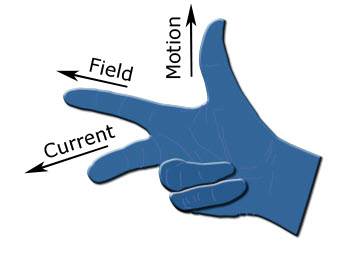 |
Fleming’s Right Hand Rule for Generators
In a basic generator we have the following main components:
Rotor
The rotor has electric coils embedded in it. These coils are connected to an external power source that supplies electricity. The current flowing through these coils creates a magnetic field that stays stationary – just like a permanent magnet, which has a magnetic field which does not move.
Stator
The stator is also embedded with coiled conductors – which are also stationary since the stator is resting on ground. The stator coils are provided with connections to create an external circuit – but no current flows through these circuits because there is no power source.
Generator Action
The rotor is attached to a prime mover (a diesel engine, a steam turbine, etc.) The prime mover is used to rotate the rotor – as a result, the rotor’s magnetic field begins to rotate and cut through the stator’s coiled conductors. This results in generation of emf in the stator and current begins to flow in the stator since it is connected to external electric load.
This phenomenon is illustrated by Fleming Right Hand Rule. Since we know the direction motion (rotor’s motion) and the direction of rotor’s magnetic field (per Ampere’s rule) we can easily find the direction of current in the stator by using Fleming’s Right Hand Rule.
In a generator we convert mechanical energy supplied by the prime mover into electrical energy in the form of stator’s output.